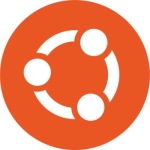Most of our tech applications are based on Red Hat Enterprise Linux.
We chose Red Hat Enterprise Linux for most of our workloads and applications because it is an enterprise-grade operating system with regular security patches, reliable support, and a guarantee against hacking. Using a different OS would leave us vulnerable to security risks and complicate upgrades.
Currently, 70 percent of our Red Hat Enterprise Linux environment is deployed on-premises, while the remaining 30 percent resides in the cloud.
We utilize Ansible to automate the deployment of numerous Red Hat Enterprise Linux modules. This centralized approach, managed by a single Ansible engine, streamlines our development process.
Red Hat Enterprise Linux performs well for our business critical applications.
Red Hat Enterprise Linux's built-in security features satisfy our security requirements.
Red Hat mitigates risk by rapidly releasing patches for identified vulnerabilities, which is crucial for mission-critical applications.
It offers stability that enhances business continuity, simplifying upgrades, even for minor releases. Its compatibility with OpenSCAP, which provides profiles for various compliance benchmarks, streamlines compliance testing.
Red Hat Enterprise Linux provides regular security patches and proper support, allowing me to focus more on application management than worrying about the operating system.
It helped us avoid emergencies caused by security issues. The CVE reporting and knowledge base are valuable resources.
Red Hat Insights provides the tools for proactive environment management by identifying potential vulnerabilities, such as CVEs before they become a problem. This allows for advanced knowledge of system vulnerabilities and provides specific remediation guidance, which is more efficient than relying on regular scans.
Red Hat Enterprise Linux has helped reduce our total cost of ownership.
Red Hat Enterprise Linux is an enterprise-grade solution where we receive regular security patches and proper support.
Red Hat Enterprise Linux was not used for containerization due to its mutable nature, unlike CoreOS, a lightweight and immutable Red Hat Enterprise Linux variant designed explicitly for containerization and optimized for running authorization.
I am testing AI workloads, and I'm not sure if Red Hat Enterprise Linux is fully equipped. It might not accommodate AI workloads as effectively as needed.
Some Red Hat applications, such as Ansible for automation, are considerably more expensive than the average open-source solution.
I have been using Red Hat Enterprise Linux for 16 years.
Red Hat Enterprise Linux is stable, and I have not encountered issues compared to other applications.
Red Hat Enterprise Linux is scalable.
Red Hat's stability has meant I haven't needed their support for years, but when I did contact them previously, their response was quite fast. While their support for OpenShift is acceptable, I do have some concerns about it.
A stable OS allows me to focus more on applications, lowering the cost of managing the infrastructure.
Red Hat is stable, and we always opt for the lower-tier subscription, which is affordable. It doesn't have unexpected issues that require a premium subscription.
I would rate Red Hat Enterprise Linux nine out of ten.
It is important to assess the risk and use case before choosing a third-party Linux OS. For mission-critical applications, Red Hat Enterprise Linux provides insights and rich features like the patching cycle.



















